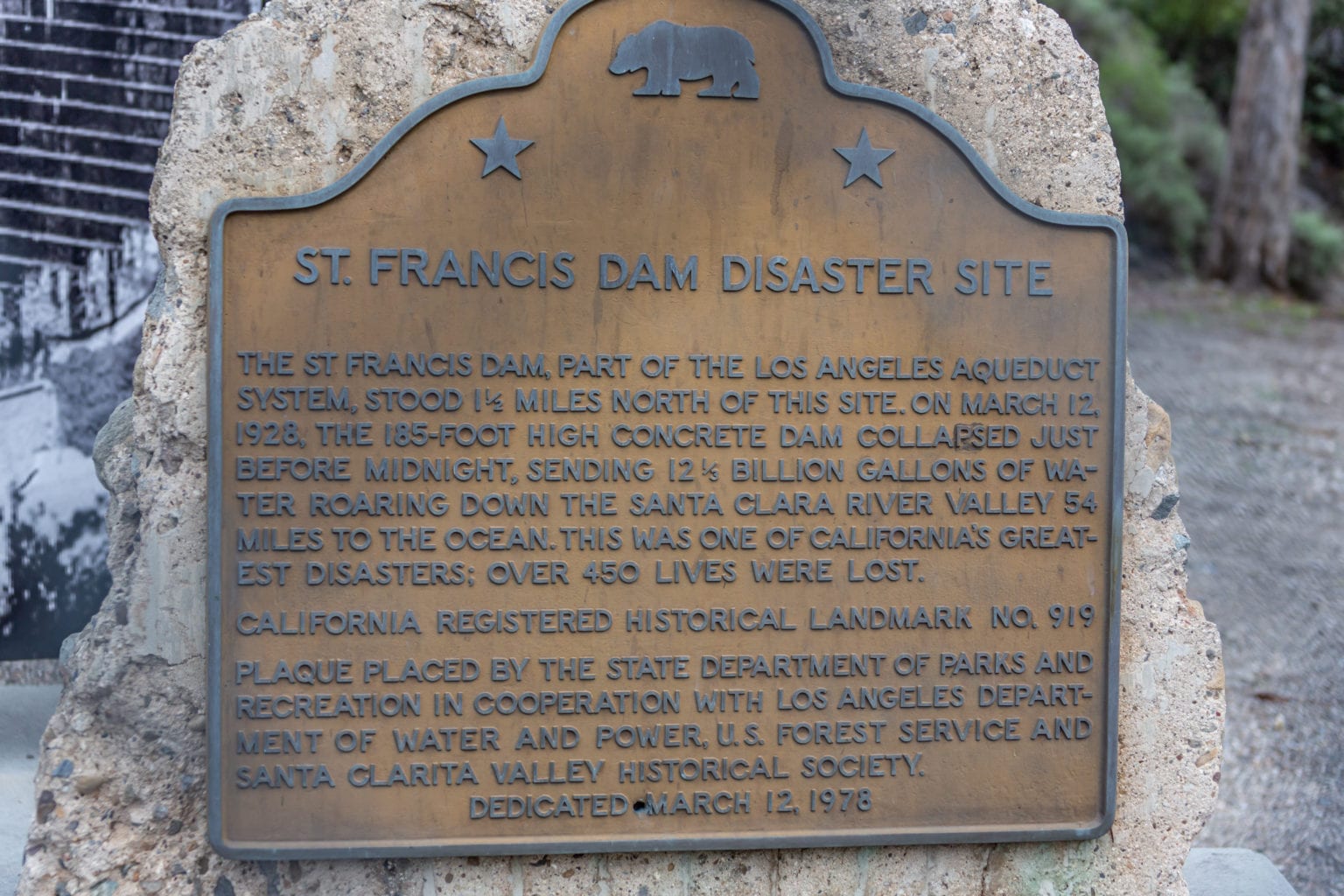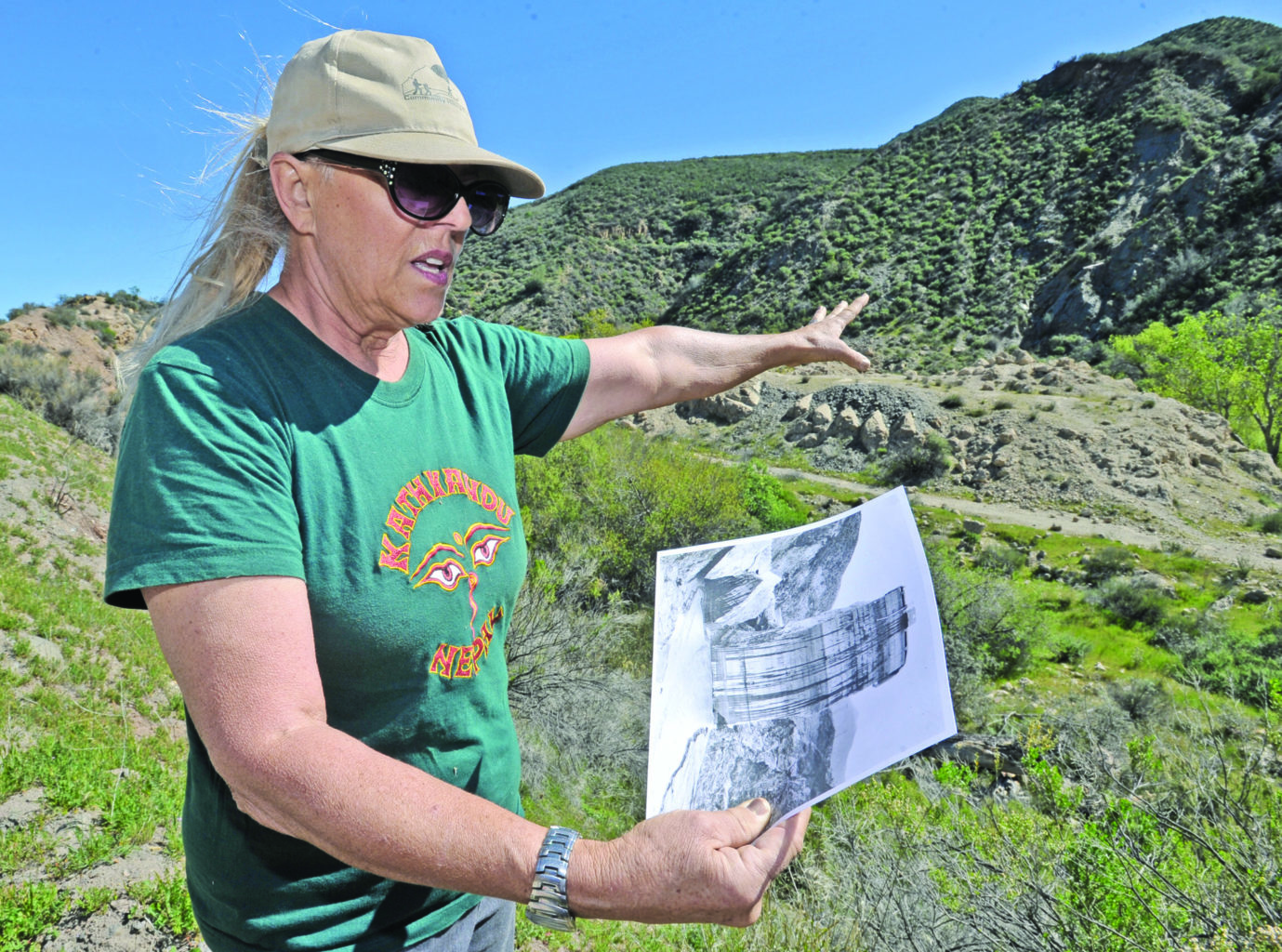The U.S. Senate approved an expansive public lands bill Tuesday that proposes — among other things — the creation of four new national monuments, including the former St. Francis Dam site in San Francisquito Canyon.
The bill calls for the revival of a popular conservation program, an additional 1.3 million acres of new wilderness, the expansion of multiple national parks and four new monuments. U.S. senators approved the bill, titled the Natural Resources Management Act, 92-8. It now heads to the House of Representatives for a vote.
The Natural Resources Management Act combines more than 100 separate bills to achieve its goals and is a companion bill to the first piece of legislation that Rep. Katie Hill, D-Agua Dulce, introduced into the 116th Congress earlier this month.

The United States Sentate approved a bill that includes designating the Saint Francis Dam site in San Francisquito Canyon. Cory Rubin/The Signal 
The United States Sentate approved a bill that includes designating the Saint Francis Dam site in San Francisquito Canyon. Cory Rubin/The Signal 
The United States Sentate approved a bill that includes designating the Saint Francis Dam site in San Francisquito Canyon. Cory Rubin/The Signal
“The St. Francis Dam Disaster took place 10 miles north of what is now my hometown of Santa Clarita,” Hill said in a release, mentioning how thankful she is to the senators who supported the bill. “In honor of the hundreds of lives lost, this memorial will uplift the stories of the tragedy and serve as a constant reminder that our infrastructure is deeply important to our community safety and security.”
Former Rep. Steve Knight was able to previously pass a similar bill through the House three times when he was in office, and he expressed Friday how exciting it was that the St. Francis Dam site could soon become a national monument.
“When we left last year, we put everything in motion so it’d pass this year,” he said, adding that he hoped the bill would get passed last December or as early as November. “We dealt with Sen. (Dianne) Feinstein and Sen. (Kamala) Harris quite extensively, so we knew it was going in the right direction. We’re very happy. It’s something that was deserved for the community.”
If the Senate-approved legislation were to pass the House and receive a signature from the president, then the secretary of agriculture will have no longer than three years from the the date of the bill’s enactment to submit recommendations to Congress regarding: “the planning, design, construction and long-term management of the memorial; the proposed boundaries of the memorial; a visitor center and educational facilities at the memorial; and ensuring public access to the memorial,” according to the bill’s text.

Dan Watson Rusted pipes pertrude from the crumbling concrete of the abutment at the top of the St. Francis Dam site. 030615 
Dan Watson Community Hiking Club Executive Director Dianne Erskine-Hellrigel points to the remaining piece of the St. Francis Dam as she hiked above the site in March 2015. 030615 
Dan Watson Community Hiking Club Executive Director Dianne Erskine-Hellrigel points to the remaining piece of the St. Francis Dan as she holds a copy of an 87 year old photo of the same area and the” tombstone” – the center portion of the dam that was left standing after the break on March 12, 1928. 030615
Dianne Erskine-Hellrigel, the executive director of the Santa Clarita Valley Community Hiking Club and someone who helped kick-start a portion of the recently approved public lands bill when former Rep. Howard “Buck” McKeon was in office, said the legislation is a dream come true. “And what’s so interesting is people in Santa Clarita don’t even know the second biggest disaster in the state happened here,” she added.
“We are keeping our fingers, toes and everything else crossed so it’ll get out of the House in the next couple of weeks, and we’ll finally have a memorial,” Erskine-Hellrigel added, recalling how the bill originated.
“It all started before I was born, really,” she said, explaining the story of her grandparents, mother and family members who walked on the dam two days before it collapsed and killed more than 400 people.
“They thought it was so gorgeous, and were really taken aback because it was such a beautiful dam so full of water,” Erskine-Hellrigel said.
Her mother, who was 6 at the time, was able to see the schools, ranches and picturesque sights of San Francisquito Canyon as her family headed back to Burbank, and the beauty captured their hearts, according to Erskine-Hellrigel. “But when they went back to visit it after the dam broke, they couldn’t believe the devastation.”
Years later, Alan Pollack, president of the Santa Clarita Valley Historical Society, would visit the Johnstown Flood National Memorial in Pennsylvania, which had a visitor center of its own and a similar story to that of the St. Francis Dam.
“It was Pollack’s idea to turn the dam into a national memorial, but he didn’t know how to do it,” Erskine-Hellrigel said, so he eventually sought the hiking club president’s help.
“I was working on seven different pieces of legislation,” Erskine-Hellrigel said, so she was hesitant to assist with the task at first. “But then I thought, ‘Wait a minute, this is my mom’s big thing in her life — so I want to do this for her.’”
Pollack and Erskine-Hellrigel would begin writing the initial proposal together before taking it to McKeon.
“He introduced it, but it didn’t go anywhere,” Erskine-Hellrigel said, adding, “I was so disappointed, but we worked with Congressman Knight and he got it passed in the House three times, (and) now it’s passed the Senate.”
Erskine-Hellrigel is so excited for the legislation that she and Pollack have already begun discussing the preliminary ideas and “big plans” they have for the prospective visitor center. The pair hopes the center will be a two-story building that will tell the story of water in Los Angeles and the St. Francis Dam disaster.
The hiking club president said she has the original news footage from the flood in her possession and intends to use films to tell stories of the water wars, nearby Navajo trading post and local history that all occurred at the former disaster site.
“There’s no appropriations that will come with this (legislation),” meaning there will be no federal funding, Erskine-Hellrigel said. “So it’s up to us to make everything happen.”
On Friday, Erskine-Hellrigel said she received a 501(c)(3) number that will allow her to start raising funds for the project.
“If somebody wants to send us a check for $5, it’s tax deductible,” she said. “We need all the money we can get.”
One child recently sent $1 in last month, so literally send in what you can, Erskine-Hellrigel added. “This has been six and a half years in the making. I’m so excited to be able to say that we’re almost there. It’s just got to pass the House.”
















